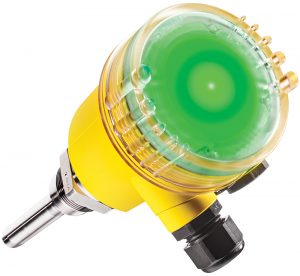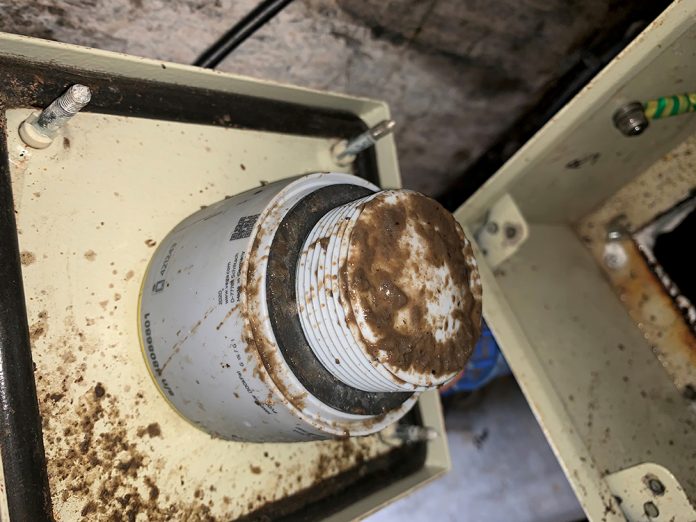Gravity thickener machines are widely installed and used in waste water treatment plants, water treatment plants as well as in a wide range of industries with waste or solids separation requirements like; food and dairy, pulp and paper, abattoirs and special aggregates industries, for example. Gravity belt thickeners are primarily used for water-volume reduction prior to digestion, further dewatering/drying, transportation for incineration or disposal. They are continuously operating machines which thicken sludge by gravity using a revolving porous filter belt or conveyor. They generally produce a still pumpable, but much thickened sludge.
Gravity Thickeners
They employ the natural tendency of higher-density solids to settle out of liquid to concentrate them, combined with mechanical assistance to augment the process. Think of the example in a kitchen of passing a stock through a sieve, using a spoon to stir and agitate the process to encourage more liquid to pass over a wider area/cleaner parts of the sieve.
The technique is used in the same way in both industrial and municipal settings. A gravity belt thickener employs ‘gravity drainage’, i.e. dilute sludge (typically 0.5% to 1.0%), which is introduced at the feed-end of a horizontal filter belt. As the slurry makes its way down the moving belt, any free water drains through the porous belt. The solids are continuously turned, encouraging the drainage of more water through a filter belt to thicken. A drum thickener works on a similar principle of conveying treated sludge (a.k.a. flocculated sludge) through a slowly rotating drum filter. The sludge remains in the drum, while the water phase passes out through the filter.
Some ‘dynamic’ systems also employ a partial vacuum or pressure to assist with the filtering to accelerate or optimise the process. There are also presses and centrifuges which also carry out similar tasks, all with similar process challenges and varying control techniques. In most cases, the final sludge is discharged into an outlet hopper as a pumpable thickened sludge.
The sludge to be thickened may be polymer-conditioned prior to digestion, being prepared for a further process of mechanical dewatering in a press or centrifuge, or water-reduced before transporting for land application or sludge disposal site.
Controlling the thickening process
Control of these mechanised processes is key to producing a consistent throughput and output. Too fast and the filter systems can be overwhelmed, too little wastes energy, capacity and can have a detrimental effect on the quality of the final sludge.
To do this, among other devices, the machines employ a variety of level and pressure sensors for control and feedback of how the process is running. That can be pressure in lines and pumps, differential pressure on filters or across pumps, level in feed and receiving hoppers and even on the belts themselves, as well as density of incoming and outgoing media. All of these measurements help the machine manufacturers, and in turn the plant operators, optimise performance, control and energy inputs. Really good automated control equals less power consumption, and a better quality output – every gram of water extracted means less energy in transport, further processing or drying. When that gets scaled up to a large waste water network, or large scale industrial process in food, paper, steel or aggregates, these grams of water can quickly turn into significant amounts of savings across a fleet of machines and sites. The issues of getting reliable control are many-fold. If we look at the instrumentation that provides the data – accurate measurements are once again amplified through the cost and processing chain of this continuous, automated process.
Challenges of pressure control
One critical area are the pressure sensors used to monitor performance in delivery systems, pumps, recirculation or outfeed circuits. The big issue is pressure monitoring sensors are required to be sensitive in design to make the measurement, (and kept away from direct contact with the arduous process conditions) yet ideally they need to be flush mounted in pipe lines and vessels (in direct contact) to avoid blockages from the sludge they are monitoring. Both of these situations can cause errors: Recessed protected sensors become prone to blockages or air pockets – it can be worked around with air or water flushing, but this just adds cost and complexity and maybe unwanted water into the process. However, by flush mounting them, it exposes the sensitive thin metal pressure diaphragms which can be prone to abrasion damage from particles in sludge. The result of this? Drift in the accuracy of readings, which, when trying to extract every gram of water or solids, can negate all that optimising work. So care in their mounting and positioning needs to be taken, air pockets and blockages in small recesses can play havoc with readings, and in turn; extra servicing, recalibration and repairs, which can introduce costly downtime and interruptions. Unfortunately, the outcome can be overflowing or over-running machines, often reported as a big problem due to lack of accurate, proper control, so machines are often switched to “run in manual”, to counter this. However there is a solution for these pressure measurements.
Flush with solutions
Using something as simple as ceramic pressure sensors that can be fully flush mounted, (with a fully concealed elastomer O-ring to reduce exposure to wear) means the problems of blocking, flushing, cleaning, wear and damage can thus be avoided. This ceramic diaphragm technology is already proven in slurry pipes in the mining and recycled paper industries with their respective bombardments of sand/grit or ‘paperclips’, both of which are fatal to metal diaphragm devices. “Flush mounting without fear” using ceramic pressure transmitters also means no mis-reads from blockages or air pockets due to syphon/vacuum effects from flows across recessed pipes/fittings. Another benefit of ceramic cells is they also have much better resistance to pressure shock overload and ‘water hammer’, once again providing better long term accuracy and stability.
Some ‘dynamic’ thickener systems, using pressure or vacuum, also require a differential pressure measurement across the filters or pumping systems to detect any drop in performance. This information is invaluable, as again it can directly control speeds of filter mesh or flow rate, to avoid overflows and flooding. This can also be best achieved in the same way, by using two ceramic-faced sensors, in a remote electronic differential pressure configuration, which again provides a direct flush-mounted measurement.
Density monitoring
Density measurement is another parameter monitored during processing, this is normally done using sophisticated and sensitive in-line density sensors, but again, they are vulnerable to build up and wear. Instead, or as a back-up, there is an option for a flush mounted or top mounted ceramic-cell differential pressure system (or level/volume versus hydrostatic head) that can be used for a continuous density measurement in vessels at certain process points. These simple innovative pressure solutions can be employed to ensure the correct feed rates and quality of output are being maintained, to help maintain reliability and automation of the processes.

Keeping level control
Finally, but just as importantly, we come to level controls in the sludge handling and feed. Conductivity based point level switches and ultrasonic level sensors are the incumbent technologies – particularly in the water industry – most often used in these processes. The big issue for the sensors is the nature of the process and often confined operational space with a close proximity to splashing, sticky sludge. This causes issues for ultrasonic sensors with echo loss or ‘blocking distances or dead zones’ in the near-range, similarly on conductivity point level switch probes causing locked-up switch signals. These situations often result in machine reliability issues, nearly always caused by build-up and sensor fouling, consequently these operational problems end up with automated processes malfunctioning. When blocked by build-up, conductivity probes will often remain in a switched state until someone is called out to site and the probes are cleaned. Maintenance call outs for such an avoidable ‘nuisance false high level’ are costly and provide additional strain on maintenance teams. The machines can often over flow or flood, with loss of production, time-consuming, unpleasant clean ups and even damage to equipment. This is because the sensors are working on the limits of capability, there are often unsuccessful attempted ‘work-arounds’ and the upshot is a loss of confidence in automated control systems by operators. The thickeners are run in manual or semi-manual mode, and what should be virtually continuous and automated, becomes a batch-operation and personnel are losing time constantly supervising the thickeners, where they could be spending it elsewhere on plant.
It has been shown by using radar-based sensors in these applications, these issues in level monitoring and control can be overcome. They can work in more confined spaces, they have no ‘dead zone’ or ‘blocking distance’, and operate comfortably with build-up and water deposits on the sensor face to still maintain accurate readings and control. In conjunction with a controller they can also be used as ‘non-contact point level control’, to replace probes. Until now, they were perceived as expensive, but new compact 80 GHz devices are both highly affordable and competitive with ultrasonic and even the point level switches. Extra benefits like Bluetooth for remote adjustment and operational information, means they can be monitored real-time, from a safe position, to ensure they are delivering the performance needed.
If a separate, discrete back-up point level device is needed, another alternative is an admittance-based level probe solution, perhaps a little more money than an ‘inexpensive’ conductivity switch, but could deliver much better reliability with its self-adjusting technology to negate build up.
This article covers gravity thickener machines and processes in general and each application will differ in one way or another. That said, whatever your role, as machine or system supplier, or end user with existing equipment, the challenges in these applications are the same. However, consult with a good level and pressure supplier, be prepared to collaborate and innovate with them, even do some trials and tests at problem sites, you could be surprised at the cost effective improvements to yield, quality and efficiency.
info.uk@vega.com
www.vega.com



